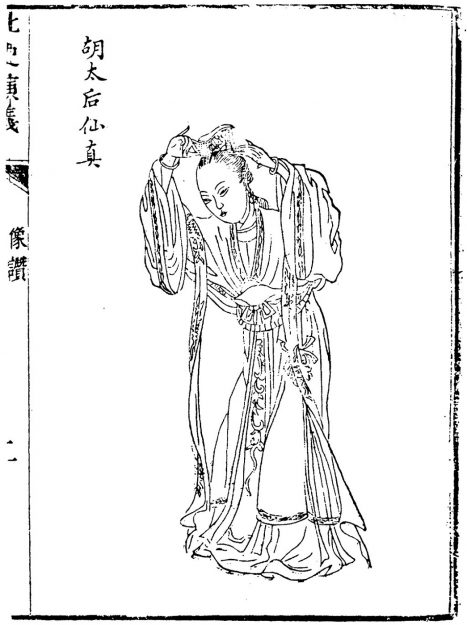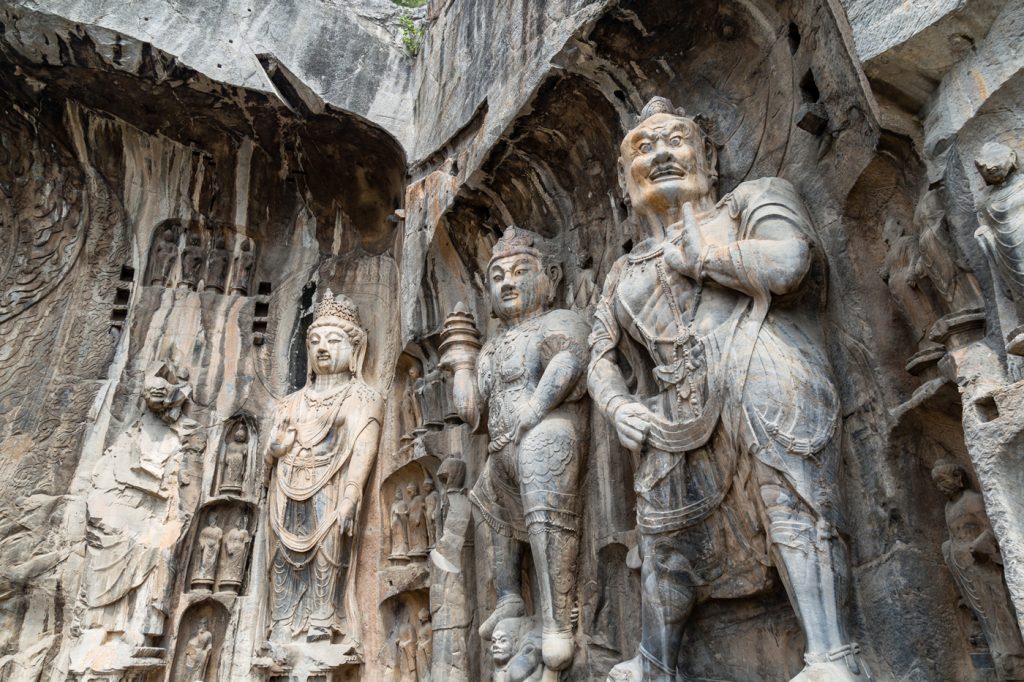In the early 6th century, the Chinese dynastic capital of Luoyang was a site to behold. A resplendent Buddhist city, it was home to an impressive collection of Buddhist architecture, including monasteries, nunneries, and Buddhist grottoes. At the center of the city was a splendid pagoda—the tallest known structure in the world in its time. These institutions hosted a vibrant Buddhist society, not only of doctrine and meditation but also of pleasure gardens and lively cultural celebrations. The multiethnic inhabitants of Luoyang visited the city’s Buddhist institutions to enjoy spectacles—music and dance performances during periods of ritual fasting, displays of magic, and other forms of entertainment. Luoyang was the capital city of the Northern Wei dynasty for forty years (493–534), built to its full splendor by its colorful ruler, Empress Dowager Ling (d. 528), whose story is the subject of The Women Who Ruled China by Stephanie Balkwill, assistant professor of Asian Languages and Cultures at UCLA.
The Women Who Ruled China:Buddhism, Multiculturalism, and Governance in the Sixth Century
By Stephanie Balkwill
University of California Press, 2024, 272 pp., $34.95, paper.
Balkwill sets out to uncover the story of the life and reign of this dynamic empress dowager (a mother ruling in place of her son). Much of what is known about her life has come from official Chinese dynastic history, which gives an overwhelmingly negative account, characterizing her as a “licentious female usurper.” Arguing that it is time for a new, more balanced version of the story, Balkwill points out that this text was written shortly after the empress dowager’s death by the very people who murdered her and inherited her power. Alongside a new translation of the official biography, Balkwill draws on extensive alternative sources, many of which are Buddhist in nature, and presents comprehensive critical commentary and a rich historical contextualization of the Northern Wei dynasty and Buddhist history in 6th-century China. The result is a compelling story of the life of an empress dowager renowned in her time for her prolific patronage of Buddhism.

One of this book’s strengths is the broader investigation into the historical and social issues in the rise and fall of Ling. This pushes beyond a mere biography and contributes to our understanding of the history of Northern Wei Buddhism. As Buddhism spread across China, it encountered both Han bureaucratic culture and a host of other ethnic groups and cultural attitudes, leading to the emergence of a new type of courtly Buddhism. This system allowed elite Buddhist women, particularly those on the borders of Han culture with ties to other ethnic groups, to gain a new sense of autonomy. They came to exercise political authority through connections to monastic institutions. Balkwill reveals, through careful contextualization, that Ling’s Buddhist connections and activities are not altogether exceptional but rather one example of how Buddhism’s entry into Chinese society afforded women new social roles. Empress Dowager Ling was born into a social and familial milieu of Buddhist women who wielded cultural prestige and power.
B alkwill begins her account of Ling’s rise to power with the story of her aunt, the eminent Buddhist nun Sengzhi. Hailing from the non-Han regions of the northernmost borderlands of the old Han empire (202 BC–220 AD), Sengzhi took ordination as a young woman and gained renown for her Buddhist practice, eventually gaining the rare official title of “dharma master” (Ch.: fashi). Her high status within Buddhist circles led to a court appointment as “superintendent of nuns,” in which she administered and held influence over Buddhism at court and within the empire. She thus came to hold prestige in both the religious and political spheres.
Using her influence with the emperor, Sengzhi recommended that her young niece, the future empress dowager, be brought to court in Luoyang as an imperial concubine. Balkwill’s careful examination of Sengzhi’s story enriches her argument that Buddhist women were able to harness power to promote their families and allies, creating networks of powerful Buddhist women who could even influence the future rule of the dynasty. Ling quickly gained promotion to a high rank and went on to produce the only male heir to the throne, affording her tremendous sway at court. Upon the death of Emperor Xuanwu, in the year 515, she assumed direct rule of the Northern Wei as regent to her son and held on to power until her death, in 528.
Buddhist women were able to harness power to promote their families and allies, creating networks of powerful Buddhist women who could even influence the future rule of the dynasty.
In Ling we find a ruler who offered incredible support for and patronage of Buddhism in her court and capital. Balkwill provides a plethora of colorful examples that underscore the extent of her Buddhist patronage. For one, Ling had a penchant for building pagodas. At the Eternal Peace Monastery outside the palace gates, she commissioned the building of a nine-story golden pagoda, the tallest building in the known world; at the Jade Radiance nunnery within the palace walls, she built a five-storied pagoda. She had other pagodas and monasteries erected across all prefectures of Luoyang. At the time of her death, she had extensively transformed the physical landscape of Luoyang into a magnificent Buddhist city.
The empress dowager was also a great patron of Buddhist rock-cut grottoes outside the city. The Buddhist sites of Yungang and Longmen, in particular, are filled with caves containing carved and painted Buddhist scenes and imagery commissioned and funded by her. In addition, she funded the creation of numerous Buddhist statues and images across her realm. The institutions and artistic products set an opulent stage for the many Buddhist rituals, assemblies, and other activities she funded. All in all, Ling established a lively Buddhist culture in her capital, creating an outstanding Buddhist city and dynastic culture.
The “glimmering” Buddhist city of Luoyang lasted for the duration of Empress Dowager Ling’s reign, through her regency and political struggles to maintain a hold on power (including the poisoning of her own son!). The tumultuous politics eventually saw her demise and that of her capital and most cherished building projects. In a dramatic end to her life and rule, in 528, invading forces entered the city, drowned Ling in the river, murdered her courtiers, and sacked her precious city of Luoyang, destroying many of its Buddhist monuments. Shortly before their arrival, in an attempt to avoid her demise, she was ordained as a Buddhist nun—a fitting act for such a devoted supporter of Buddhism.
Balkwill writes of Empress Dowager Ling and the world in which she lived with careful research and thoughtful critical reflection. The story comes to life through her copious translations of selections from primary sources. One is left with a rich and layered picture of the Northern Wei elite Buddhist life and the lives of women within. This book demonstrates that one woman’s life and short-lived reign can lead readers to ponder much larger questions—how have Buddhist models for political rule been implemented across various times and cultures? How has Buddhism impacted the social status of women? These are questions that are applicable to the full range of cultural contexts in which Buddhism has found itself across history, and The Women Who Ruled China makes an engaging contribution to their study.
Thank you for subscribing to Tricycle! As a nonprofit, we depend on readers like you to keep Buddhist teachings and practices widely available.

